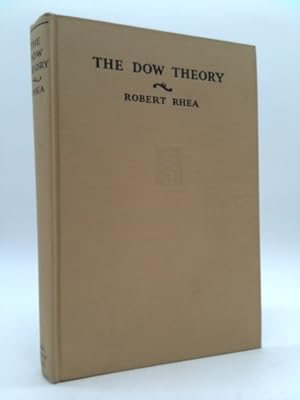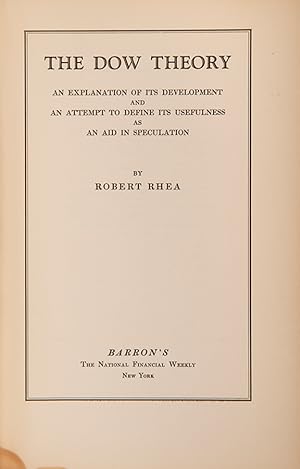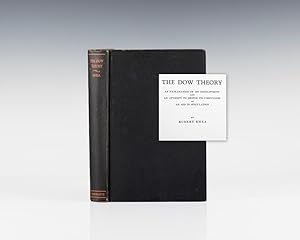dow theory explanation development attempt von robert rhea (5 Ergebnisse)
FeedbackSuchfilter
Produktart
- Alle Product Types
- Bücher (5)
- Magazine & Zeitschriften (Keine weiteren Ergebnisse entsprechen dieser Verfeinerung)
- Comics (Keine weiteren Ergebnisse entsprechen dieser Verfeinerung)
- Noten (Keine weiteren Ergebnisse entsprechen dieser Verfeinerung)
- Kunst, Grafik & Poster (Keine weiteren Ergebnisse entsprechen dieser Verfeinerung)
- Fotografien (Keine weiteren Ergebnisse entsprechen dieser Verfeinerung)
- Karten (Keine weiteren Ergebnisse entsprechen dieser Verfeinerung)
- Manuskripte & Papierantiquitäten (Keine weiteren Ergebnisse entsprechen dieser Verfeinerung)
Zustand
- Alle
- Neu (Keine weiteren Ergebnisse entsprechen dieser Verfeinerung)
- Antiquarisch (5)
Einband
Weitere Eigenschaften
- Erstausgabe (4)
- Signiert (1)
- Schutzumschlag (Keine weiteren Ergebnisse entsprechen dieser Verfeinerung)
- Angebotsfoto (4)
Sprache (2)
Preis
- Beliebiger Preis
- Weniger als EUR 20 (Keine weiteren Ergebnisse entsprechen dieser Verfeinerung)
- EUR 20 bis EUR 45
- Mehr als EUR 45
Gratisversand
- Kostenloser Versand nach Deutschland (Keine weiteren Ergebnisse entsprechen dieser Verfeinerung)
Land des Verkäufers
Verkäuferbewertung
-
The Dow theory. An explanation of its development and an attempt to define its usefulness as an aid in speculation.
Verlag: New York Barron's (), 1932
Sprache: Englisch
Anbieter: Antiquariat Christian Strobel (VDA/ILAB), Irsee, Deutschland
Erstausgabe
EUR 150,00
Währung umrechnenEUR 4,00 für den Versand innerhalb von/der DeutschlandAnzahl: 1 verfügbar
In den WarenkorbXI, 252 S. Gr.-8° (23,5 x 15,5 cm). Original-Leinwand (publisher's dark brown cloth with red lettering on spine). Erste Ausgabe. - Vorderes Innengelenk oben gering aufgebrochen, Vortitel mit altem Prägestempel "Alfred J. Toussaint". Einband etwas berieben und bestoßen. - Lose inliegend eine kleine gelbe Werbebroschüre "Dow theory comment" von Robert Rhea (12 S., 1 Bl.). - First edition (stated on back of title page, not a later printing). - Front inner hinge a bit cracked open at the top, dry stamp of "Alfred J. Toussaint" to half title. Binding with some shelf wear. - Enclosed is a little yellow brochure by Rhea "Dow theory comment" offering his "market letter". Gewicht (Gramm): 680.
-
The Dow Theory: An Explanation of its Development and and Attempt to Define Its Usefulness as an Aid in Speculation.
Verlag: Rhea, Greiner and Co
Anbieter: ThriftBooksVintage, Tukwila, WA, USA
EUR 28,17
Währung umrechnenEUR 89,73 für den Versand von USA nach DeutschlandAnzahl: 1 verfügbar
In den WarenkorbHardcover. Zustand: Fair. No Jacket. Dust jacket missing. Later printing. Cover and binding are worn but intact. A reading copy in fair condition. Notations throughout. Secure packaging for safe delivery. 1.25.
-
The Dow Theory. An explanation of its development and an attempt to define its usefulness as an aid in speculation.
Verlag: New York Barron's, 1932
Anbieter: Shapero Rare Books, London, Vereinigtes Königreich
Erstausgabe
EUR 572,15
Währung umrechnenEUR 9,28 für den Versand von Vereinigtes Königreich nach DeutschlandAnzahl: 1 verfügbar
In den WarenkorbFirst edition; 8vo (23.5 x 16 cm); publisher's ad. to half-title verso, tables, appendix of the editorials of William Peter Hamilton in the Wall Street Journal; later black cloth, spine lettered in red, minor damp-staining to margins of front few ff., occasional pencil annotations; x, [2], 252pp. stock23 The first edition of Robert Rhea's contribution to the development of Dow Theory, named for the eccentric founder of The Wall Street Journal, Charles Dow (1851-1902), whose trend-following trading strategy laid the groundwork for modern technical analysis and market forecasting. While confined to bed with illness for ten years, Rhea studied the Dow's action thoroughly, eventually becoming convinced that it provided the only accurate method for forecasting stock movement. This clear and precise work is the result. By 1938 Rhea was selling his mimeographed 'Dow Theory Comments' opinions to five thousand clients at forty dollars a year. Soon he had twenty-five assistants, and his bedroom became a statistical storehouse. Dennistoun 405; Zerden p.10; Hess Collection.
-
The Dow Theory: An Explanation of Its Development and an Attempt to Define Its Usefulness As An Aid In Speculation.
Verlag: Barron's, New York, 1932
Anbieter: Raptis Rare Books, Palm Beach, FL, USA
Erstausgabe Signiert
EUR 1.584,43
Währung umrechnenEUR 47,00 für den Versand von USA nach DeutschlandAnzahl: 1 verfügbar
In den WarenkorbFirst edition of this classic work by one of the pioneering figures in the history of Dow Theory. Octavo, original cloth. Presentation copy, inscribed by the author on the front free endpaper, "To Katherine Hubert from the compiler of these notes Robert Rhea June 22, 1933." Laid into this volume is a pamphlet by Rhea, entitled the "Dow Theory Comment." Books inscribed by Rhea are rare. Originally published serially by Barron's, it is an explanation of Dow Theory development and an attempt to define its usefulness as an aid to speculation. Rhea carefully studied 252 editorials of Charles H. Dow and William Peter Hamilton in order to present Dow Theory in terms that would be useful for the individual investor.
-
The Dow Theory. An Explanation of its Development and an Attempt to Define its Usefulness as an Aid in Speculation.
Erscheinungsdatum: 1932
Anbieter: Maggs Bros. Ltd ABA, ILAB, PBFA, London, Vereinigtes Königreich
Erstausgabe
EUR 896,51
Währung umrechnenEUR 19,73 für den Versand von Vereinigtes Königreich nach DeutschlandAnzahl: 1 verfügbar
In den WarenkorbFirst edition. 8vo. x, [2], 252 pp. Original black cloth, spine lettered and ruled in red, front cover with single blind fillet border (some light spotting to edges of text block, otherwise internally clean; tips of spine and joints rubbed, otherwise a very good copy indeed). New York, Barron's. Despite being perhaps the single most recognisable name in investment history, Charles H. Dow never published his own work on the theory of the price movement in bookform. Instead, it was left to others to popularise the Dow system of technical analysis such as William Peter Hamilton and Robert Rhea. 'While confined to bed with illness for ten years, Rhea studied the Dow?s action thoroughly, eventually becoming convinced that it provided the only accurate method for forecasting stock movement. Idolizing Dow and William P. Hamilton, Rhea formulated a complete history of Dow Theory and, in conjunction with students of the theory from across the U. S., defined its terminology. This clear and precise work is the result.' 'By 1938 Rhea was selling his mimeographed Dow Theory Comments opinions to five thousand clients at forty dollars a year. Soon he had twenty five assistants, and his bedroom became a statistical storehouse. He did not want to be a tipster; however he reputedly averaged $436 gain as against every $100 he lost' (Dennistoun). With an 8 page oblong octavo pamphlet loosely inserted advertising subscriptions to Rhea's 'Dow Theory Comment'. Dennistoun, Bubbles, Booms and Busts, 405; Zerden, Best Books on the Stock Mark: A Bibliography, p. 10.






